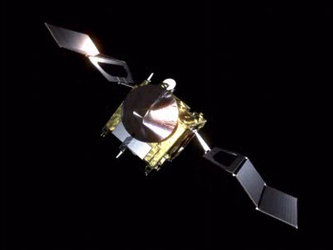Harmonising Technology
ESA is the leader of a Europe-wide effort to harmonise space technology research and development activities.
What is the Harmonisation Process?
Technology development is mandated in Article 2 of the ESA Convention: 'The purpose of the Agency shall be to provide for and to promote for exclusively peaceful purposes, cooperation among European States in space research and technology...'
The European Space Technology Harmonisation Process has therefore been developed to better coordinate research and development (R&D) activities among all actors within the European space sector.
The process involves the establishing of coordinated European Space Technology Roadmaps and the preparation of an overall European Space Technology Master Plan, through a process of consultation, coordination, harmonisation and agreement between ESA Member States, European institutions, other stakeholders and ESA's own executive.
An ESA Delegate body known as the Technology Harmonisation Advisory Group (THAG) was set up in 2006 to advise ESA's Industrial Policy Committee on Technology Harmonisation matters. Consisting of a maximum of two delegates per ESA Member State and Canada (who may be accompanied by experts for some specific issues), THAG monitors the implementation of the harmonised technology roadmaps and conclusions.
Why is Technology Harmonisation needed?
Retaining Europe's preeminent space position requires maximising its return on R&D investment
Europe is ranked among the world's leading space powers, despite its overall space spending amounting to less than a fifth that of the United States. To retain Europe's preeminent position into the future requires maximising its return on R&D investment, which in turn means combining efforts in search of synergies.
With so many players inolved - ESA, national and European agencies, Member States, industry and academia - implementing a wide set of programmes, harmonisation of efforts would not be possible without an agreed strategy and the creation of common roadmaps.
The main objectives of the Technology Harmonisation Process are to:
- “Fill strategic gaps” and “Minimise unnecessary duplications”
- Consolidate European strategic capabilities
- Achieve a coordinated and committed European Space Technology Policy
- Contribute to continuity and coherence between technology and Industrial Policies.
How is the Harmonisation Process implemented?

The yearly Harmonisation Process consists of the following main elements: selection of topics (around eight per year); two harmonisation cycles (see figure above); approval of the documents; and tracking of the roadmap implementation.
For each cycle there are two main steps: the Mapping part and the Roadmap part, with an additional step of THAG approving the document at the end of each cycle.
Mapping - The first part of the Harmonisation Process. Its kick-off is in September of the year before for both cycles of the year to follow. The goal of this part is to arrive at a consensus on the landscape and status of the technology undergoing Harmonisation.
- Roadmap - The next step in the Harmonisation Process is the preparation of the Roadmap, taking into account all data provided during the Mapping meeting. This roadmap covers all European activities, from both ESA and national agencies, as well as industrial entities when data are available.
What are the outcomes?
Outcomes of the Harmonisation Process (per topic)
After a Harmonisation cycle has been run for each of the technologies addressed, the Harmonisation Process results in two main documents per topic: the Technical Dossier and Roadmap presentation.
Technical Dossier - A self-standing document that presents the mapping of the situation inside and outside Europe, including identification of critical issues, the Roadmap and the endorsed conclusions.
- Roadmap presentation - Contains mainly the agreed Roadmap.
Overall Harmonisation Output
Harmonisation Tracking System (HTS) - Every year there is a review of the status of all activities of the Roadmaps. The purpose of that check is to report on the level of implementation of the Harmonised Roadmaps within ESA and Member State technology programmes. This is done through the Harmonisation Tracking System (HTS) for each activity on a yearly basis in collaboration with the Roadmap Responsibles and THAG Delegations, and results in a HTS report issued annually.
European Industry Capability Mapping (ICMdb) - This maps the capabilities of Europe's space industry and research institutes. This database - operational since September 2011 - is gradually updated through the Harmonisation Process and used to support the Process itself.
- European Space Technology Master Plan (ESTMP) - This is an instrument to support decision makers and stakeholders in the implementation of the European Space Technology medium- and long-term strategy and the definition and consolidation of the European Space Policy on space technology, issued each year. It includes European institutional technology plans, industrial capacities, budgets and technology harmonisation roadmaps.
What benefits does the Process deliver?
The Harmonisation Process contributes to an improved understanding of European national and industrial priorities and issues, improves the efficiency of the implementation of technology developments, contributes to redressing European dependency through prioritisation of strategic and critical technology developments while also supporting industrial competitiveness.
Today more than 50 technology areas have been harmonised, with the participation of all ESA Delegations, the European Commission and industry, involving upwards of 1000 professionals from around 200 separate European organisations.
Where to find the Harmonisation documents ? All Harmonisation documentation, especially the final Roadmaps and Technical Dossiers, are available on the Harmonisation Document Management System (HDMS). It can be accessed both from inside and outside ESA via https://harmostrat.esa.int . Login details can be requested by sending an e-mail to harmo@esa.int . How to contact the Harmonisation team ? The Harmonisation process being based on a participative effort from ESA’s Members States, industry and ESA executive, all comments, questions, expressions of interest are greatly appreciated.
Email: harmo@esa.int
Edmund Williams
Head of Technology Harmonisation Section
Office: +31 7156 53212
Email: Edmund.Williams@esa.int















 Germany
Germany
 Austria
Austria
 Belgium
Belgium
 Denmark
Denmark
 Spain
Spain
 Estonia
Estonia
 Finland
Finland
 France
France
 Greece
Greece
 Hungary
Hungary
 Ireland
Ireland
 Italy
Italy
 Luxembourg
Luxembourg
 Norway
Norway
 The Netherlands
The Netherlands
 Poland
Poland
 Portugal
Portugal
 Czechia
Czechia
 Romania
Romania
 United Kingdom
United Kingdom
 Slovenia
Slovenia
 Sweden
Sweden
 Switzerland
Switzerland




























